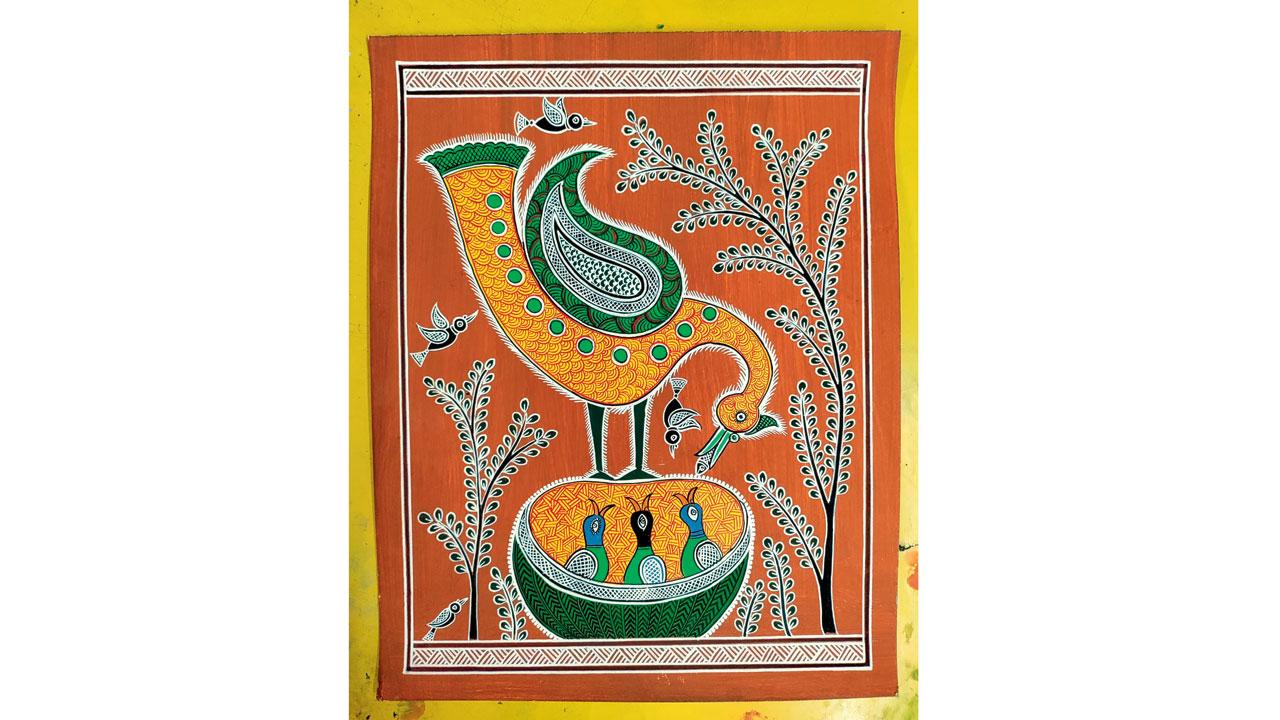A 74-year-old mandana artist from Rajasthan is the the city to tell everyone how creativity heals all strife

Vidya Devi Soni, the 74-year-old mandana artist, says it is her responsibility to keep the traditional art of Rajasthan alive in any way she can
At first glance, the bright orange and green artwork is simply a peacock feeding its chicks. But for those well-versed with the artwork of Rajasthan, the style is easily identifiable as a mandana, an ancient art form. Titled Mamata, this mandana symbolizes the love of a mother.
ADVERTISEMENT
“In Rajasthan, every region such as Hadoti, Dhundhar and Marwar, has its own form of mandana art,” says artist Vidya Devi Soni, whose works are currently on display at Method Juhu. “Mandanas are special; they are tuned to the atmosphere of the space where they are being painted, and have to be created accordingly.”
The term Mandana comes from the word Mandan, which, in the Marwari, means, “to create something”. Also widely practised in Madhya Pradesh, it is deeply interwoven with the state’s historical tapestry. Mandana paintings are usually made on the floors or walls of a house as an invitation for the gods to enter, as well as to mark festive occasions and celebrations. Among the oldest forms of tribal art that has survived over the ages, mandanas traditionally included making patterns with chalk or red ochre.

This painting, titled Mamata, depicts the love and responsibility of a mother towards her children
Similar to a rangoli, but not quite, mandanas come in all shapes and sizes. The subjects are chosen range from everyday life and rituals, such as nature, scenes of life, and occupational activities and professions. Some are made especially for the kitchen, like the Sathiyan Ka Chowk, which is based on permutations of the auspicious Swastika. Others, like a version known as Bailgadi, through white outlines and circles, is a tribute to the hard-working nature of the farmer and his bullocks who plough the fields. But the one Devi Soni remembers vividly is when the news of an elephant’s death was making the rounds in her village, and the mandana she made about it.
Growing up, Devi Soni, now 74, recalls watching her mother, Sumitra Lal, creating mandanas around the house. “At the age of six or seven years old,” she says, “I used to sit by my mother and watch her draw lines and dots, and observe how she would trace out flowers and leaves. By the time I was 11 years old, I had already perfected the lines, emblems and shapes.”
All the houses in their village in Bhilwara have mandanas drawn on them. Devi Soni recalls wandering around the village, seeing the different types of mandanas on the mud walls. The varied shades of colours and themes made her curious and sparked the desire to create something like that with her own hands.
Soon, Devi Soni introduced a twist to her mandanas: she began creating them on canvas and paper, not just on walls and surfaces. Using natural colours and chalks, such as earthy red ochres and khadi mitti, a type of edible clay, she now draws the designs and then fills them in, usually using her fingers. “I’ve seen a lot of ups and downs in life,” she says proudly, “lekin maine meri kala jeevit rakhi hai.”
The mandana artwork exhibition is part of the Affordable Art Show curated by Srila Chatterjee of Baro Market.
WHAT: Mandana artwork exhibit
WHEN: Until August 27
WHERE: Method Juhu
 Subscribe today by clicking the link and stay updated with the latest news!" Click here!
Subscribe today by clicking the link and stay updated with the latest news!" Click here!







